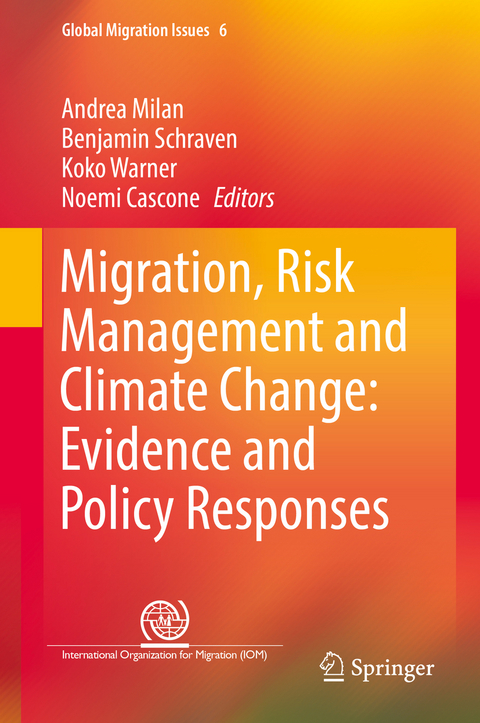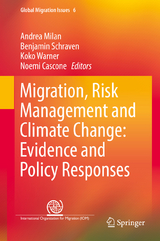Migration, Risk Management and Climate Change: Evidence and Policy Responses
Springer International Publishing (Verlag)
978-3-319-42920-5 (ISBN)
Introduction - "Climate change and human mobility after Paris" by Koko Warner.- PART 1 - Mountain areas: Chapter 1 - "An index based assessment of vulnerability to floods in the Upper Indus Sub-Basin: What role for remittances?" by Soumyadeep Banerjee, Muhammad Zubair Anwar, Giovanna Gioli, Suman Bisht, Saleem Abid, Nusrat Habib, Sanjay Sharma, Sabarnee Tuladhar, Azeem Khan.- Chapter 2 - "Role of remittances in building farm assets in the flood affected households in Koshi sub-basin in Nepal" by Soumyadeep Banerjee, Suman Bisht, Bandita Sijapati, Meena Poudel, Dominic Kniveton.- Chapter 3 - "Migration as a Risk Management Strategy in the Context of Climate Change - Evidence from the Bolivian Andes" by Regine Brandt, Raoul Kaenzig and Susanne Lachmuth.- Chapter 4 -"Circular migration and local adaptation in the mountainous community of Las Palomas (Mexico)?" by Noemi Cascone, Ana Elisa Peña del Valle Isla and Andrea Milan.- PART 2 - Low-lying areas: Chapter 5 - "Household adaptation strategies to climate extremes impacts and population dynamics: case study from the Czech Republic" by Robert Stojanov, Barbora Duzí, Ilan Kelman, Daniel Nemec and David Procházka.- Chapter 6 - "Moving beyond the focus on environmental migration towards recognizing the normality of translocal lives - Insights from Bangladesh" by Benjamin Etzold and Bishawjit Mallick.- PART 3 - Small Islands: Chapter 7 - "Good fishing in Rising Seas: Kandholhudhoo, Dhuvafaaru, and the need for a Development-based Migration Policy in the Maldives" by Andrea Simonelli Chapter 8 - "The reason land matters: relocation as adaptation to climate change in Fiji Islands" by Dalila Gharbaoui and Julia Blocher.- Chapter 9 - "The Role of Remittances in Risk Management and Resilience in Tuvalu: Evidence and potential policy responses" by Sophia Kagan.- PART 4 - Policy: Chapter 10 -" Remittances for adaptation: an 'alternative source' of international climate finance?" by Barbara Bendandi and Pieter Pauw.- Chapter11- Conclusion- "Migration as adaptation: conceptual origins, recent developments, and future directions?" by Robert McLeman.
| Erscheinungsdatum | 06.12.2016 |
|---|---|
| Reihe/Serie | Global Migration Issues |
| Zusatzinfo | XIII, 229 p. 11 illus. |
| Verlagsort | Cham |
| Sprache | englisch |
| Maße | 155 x 235 mm |
| Themenwelt | Naturwissenschaften ► Biologie ► Ökologie / Naturschutz |
| Naturwissenschaften ► Geowissenschaften ► Geografie / Kartografie | |
| Sozialwissenschaften ► Soziologie ► Spezielle Soziologien | |
| Schlagworte | climate change • Environmental Geography • Human Migration • Human national and international security • Human welfare and development • Living and Working conditions • Migration • Risk Management • Social Sciences |
| ISBN-10 | 3-319-42920-5 / 3319429205 |
| ISBN-13 | 978-3-319-42920-5 / 9783319429205 |
| Zustand | Neuware |
| Haben Sie eine Frage zum Produkt? |
aus dem Bereich




